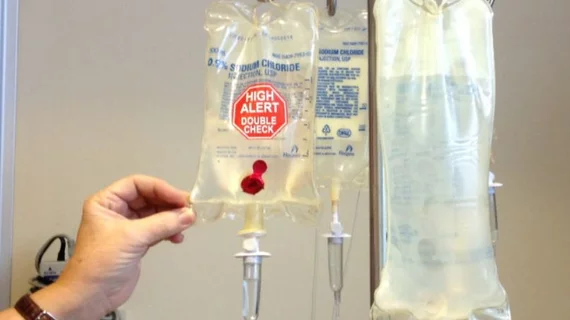Treating pediatric Hodgkin lymphoma (HL) patients with chemotherapy followed by radiotherapy results in a better five-year survival rate than chemotherapy alone, according to new findings published in JAMA Oncology.
Researchers explored data from the National Cancer Database related to more than 5,600 patients 21 years old and younger. All patients received a diagnosis for stage I or II HL from Jan. 1, 2004, to Dec. 31, 2015. While 50.3 percent of the patients received combined modality therapy (CMT), the remaining patients received chemotherapy alone.
The five-year overall survival rate for patients who received CMT was 97.3 percent, while the rate for patients who received chemotherapy alone was 94.5 percent.
“We suggest that consolidation radiotherapy as part of CMT may be considered in future clinical trials for patients with early-stage disease,” wrote Sachin R. Jhawar, MD, department of radiation oncology at Rutgers Cancer Institute of New Jersey in New Brunswick, and colleagues.
The use of CMT decreased by 24.8 percent from 2004 to 2015, and one reason for that decrease is the adverse effects associated with CMT. Research on patients from the Childhood Cancer Survivor Study, for instance, found that additional cancers, thyroid dysfunction and cardiac issues are late side effects found in patients who survive pediatric HL. The combination of chemotherapy and thoracic radiotherapy are the reason for these adverse effects, the authors noted, but treatment has also changed over the years in ways that benefit patients.
“Although reducing the overall use of radiotherapy will undoubtedly minimize any possible late effects, the radiotherapy techniques used to treat patients in the Childhood Cancer Survivor Study reflect obsolete modes of radiation delivery, whereby patients were treated with subtotal lymphoid irradiation and doses of 44 Gy or higher,” the authors wrote. “Today, smaller, more tailored fields are used, including involved site radiotherapy and involved node radiotherapy, and patients are treated with half the dose they were 30 years ago.”
Jhawar et al. also found that patients 13 years old and younger benefited the least from CMT.
“These findings are important because they represent the group most vulnerable to the adverse effects of radiotherapy,” the authors wrote.

